Table of contents
What is stretching?
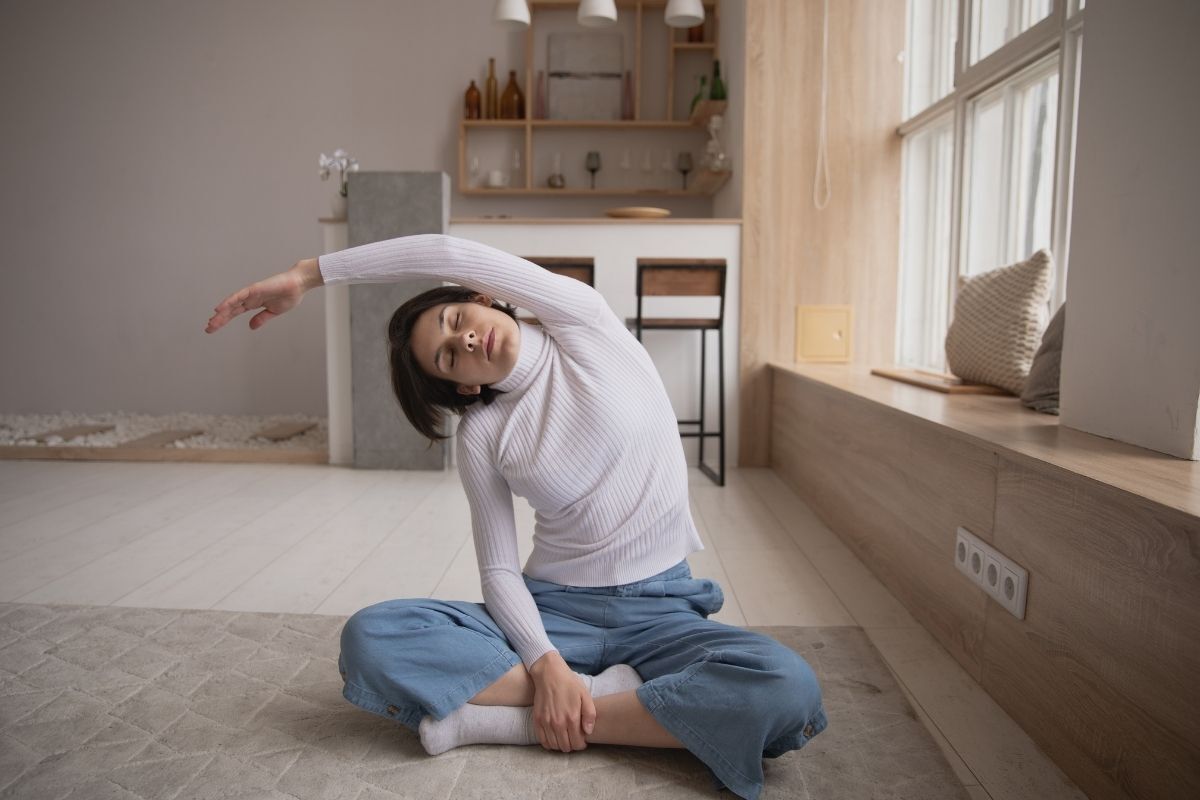
Stretching is an essential phase of any physical activity. But, going far beyond that, performing stretches should be a daily practice and independent of performing other exercises. Stretches offer more flexibility, agility and even more strength to some muscles.
Even those who have a sedentary routine should stretch. After all, this practice relieves the overload on the joints and reduces pain. In addition, it helps prevent inflammation in the joints, muscle and tendon injuries. This will ensure a better quality of professional and social life.
In this article, we will show you the different types of stretches and the benefits of stretching daily, and we will also bring you some easy exercises to get you started. Read on and find out everything!
Types of stretching
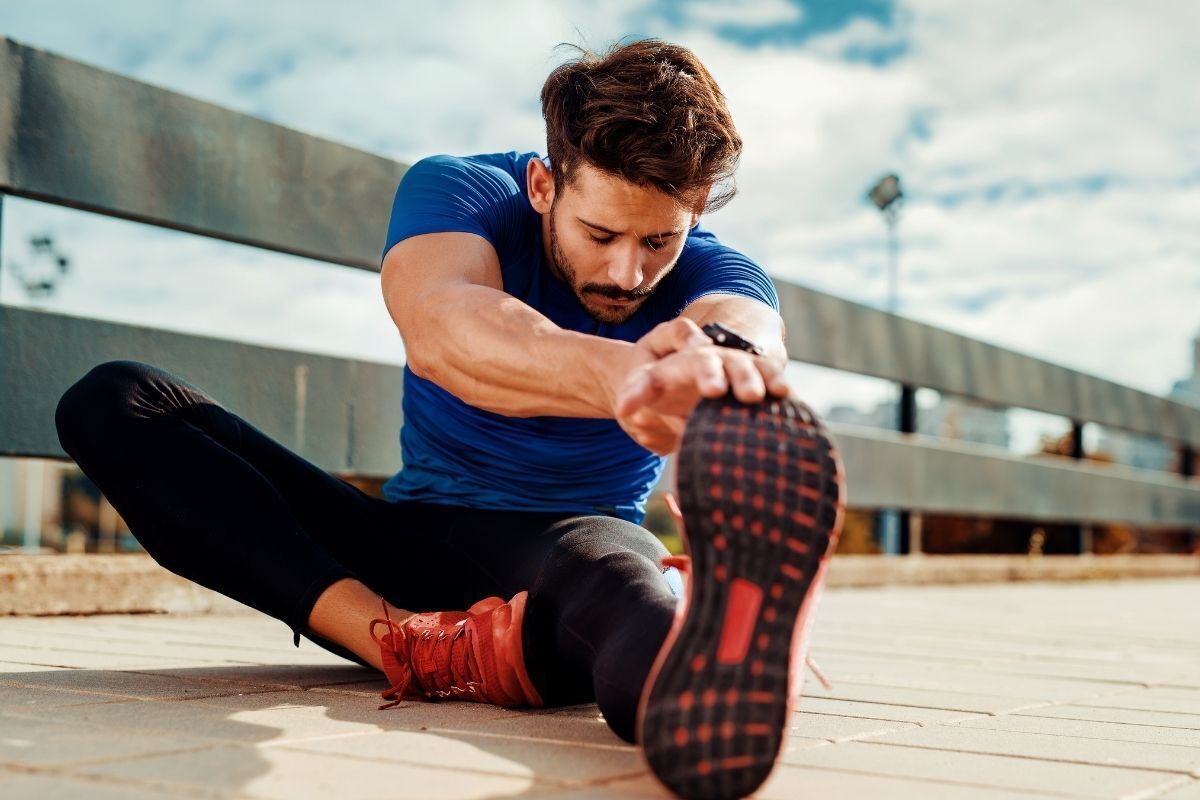
Although many people don't know, there are several ways to stretch, and each one of them has a specific goal. The main variations are dynamic, static, proprioceptive neuromuscular facilitation, specific and passive stretching. In this section, we will explain each one. Read on and understand!
Static stretching
Static stretching is the most common and what most people know as stretching. It is the one that stretches the muscle and stays in the position for a few seconds. The stretching time should be between 20 and 30 seconds.
Static stretching should be done not only before training, but also after, especially after weight training. Moreover, this stretching option is the best to recover muscles after an injury.
Specific stretching
Specific stretching, as the name implies, is aimed at specific practices. It is usually done before and after training and aims to prepare and recover the muscles that were used in that practice.
In the case of stretching before training, the ideal is to perform movements similar to those that will be used in the activity, but in a slow and controlled manner. This prevents injuries, because stretching also acts as a warm-up.
Passive stretching
In the case of passive stretching, devices or instruments are used to assist the movement. Elastic bands, balls, cushions and others are also used. Pilates, for example, uses several devices to promote elasticity through stretching.
Also, another way to practice passive stretching is with the help of a third party. This person will help you get into the proper position or perform a certain force so that the muscles are properly stretched. It is important that both parties know what they are doing to avoid injury.
Dynamic or ballistic stretching
Dynamic stretching is performed through movements and aims to increase flexibility and sports performance. They should be practiced after the warm-up to avoid injuries and may include knee lifting, squatting and rotation of limbs, such as arms and trunk.
In addition, it is important to pay attention to the rhythm during dynamic stretching, which should be maintained for a while and then progressively increased. Another benefit of dynamic stretching is that it increases blood circulation and body temperature, favoring movements and preventing injuries.
Proprioceptive neuromuscular facilitation
Proprioceptive neuromuscular facilitation is done with the assistance of another person and is therefore a type of passive stretching. However this type of stretching has a specific realization.
First, it is necessary that the person holds the stretched limb for about 30 seconds in the same position. Then, the practitioner should perform force against the helper, who should then perform even more force on the limb, aiming for relaxation by increasing the amplitude of stretching.
It is essential that this practice be done by a trained professional, since both the force and the time applied in each stretch must be carefully controlled. Otherwise, serious injuries can occur.
Benefits of stretching
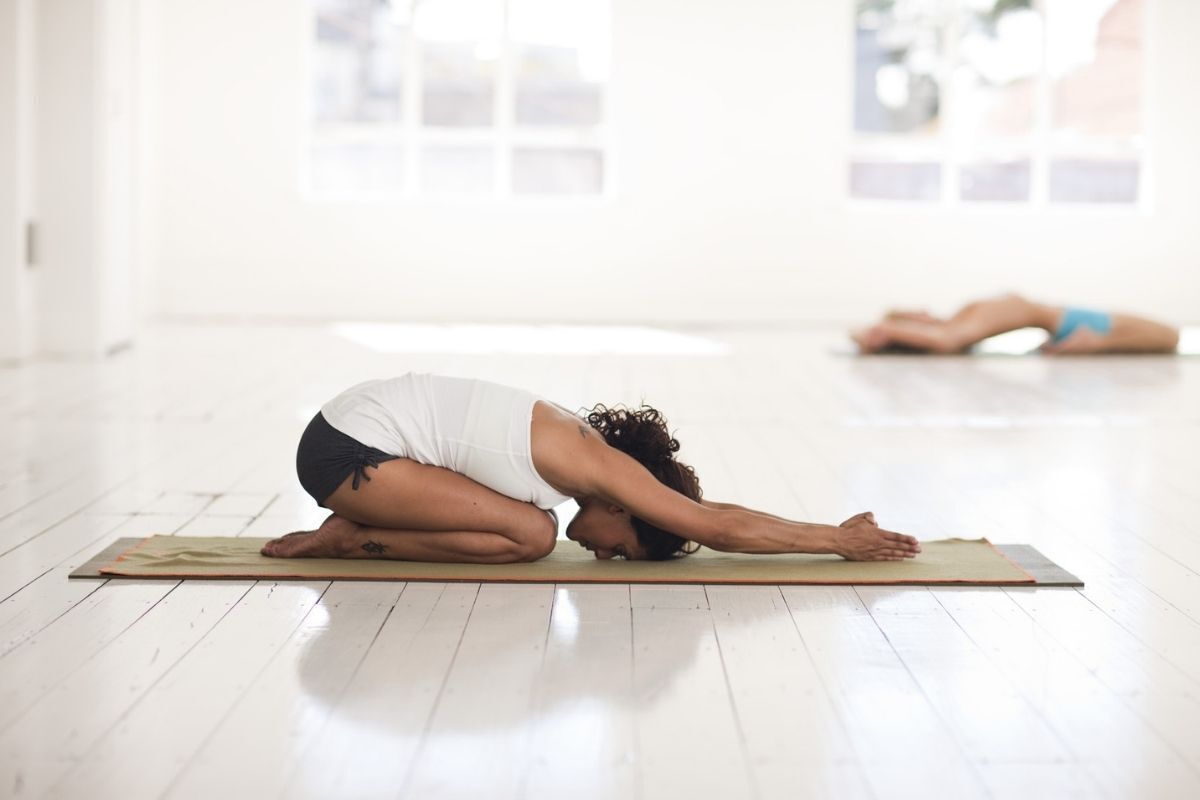
We have already presented some of the benefits of stretching, such as increased flexibility. This is, for many, the main profit of stretching, but know that this practice brings several other advantages, both for your workout and for other moments.
In this section, we will point out and explain the main benefits of stretching, follow along!
Increases flexibility
The main benefit of stretching is increased flexibility. By performing stretches correctly on a daily basis, you can clearly feel the increase in your ability to stretch.
The flexibility of muscles and joints prevents injuries during sports practices, besides triggering feelings of well-being. It is important to stretch frequently and stay flexible, since a lack of flexibility demands greater strength from muscles and joints to perform simple actions.
Relieves muscle tension
Stretching increases blood circulation, taking more oxygen to the cells, including those of the muscles. In addition, it has a relaxing effect, reduces anxiety and stress, and develops body awareness.
All this contributes to a feeling of relief in muscular tensions, whether they are caused by the training itself or by the daily rush. Therefore, it is recommended to stretch at least twice a day. At the beginning of the morning, stretching warms you up and prepares you for the various movements that you will perform throughout the day.
In the evening or after work, for example, stretching allows you to relax and enjoy a more peaceful and restful sleep.
Relaxes the body and mind
The sensations of relaxation in the body that stretching provides can also be felt by the mind. Anxiety symptoms are minimized with stretching, and performing a self-focused activity decreases symptoms such as tachycardia and mental fatigue.
Increases body awareness
Throughout the day, we perform numerous movements and, most of the time, we don't even realize it. During sports practice, many movements need to be performed perfectly, and stretches can help in this task.
By stretching daily, you will become more aware of how your body works and how to optimize each movement, performing each one in a lighter and more effective way.
Improves posture
Stretches improve posture. those for the trunk, especially the spine, give strength to the joints and muscles in the region, facilitating support and improving posture.
In addition, all stretches promote body awareness and allow the practitioner himself to control his posture. This is essential, because bad posture can bring numerous losses in the short and long term.
Prevents sports injuries
One of the most remarkable benefits of stretching is the prevention of injuries during sports practices. Dynamic stretching before training helps to warm up the muscles and to prepare for physical activity.
Thus, by increasing body temperature and blood circulation, dynamic stretching oxygenates the muscles and stimulates cellular metabolism, while static stretching after workouts relaxes the muscles and reduces pain and muscle tension.
Finally, nutrition and rest after workouts are also strategies to prevent injuries and help muscles and joints recover.
Prevents tendonitis
Tendonitis is an inflammation in the tendons and can occur in any. However, it is more common in the wrists, shoulders, elbows and knees, mainly due to repetitive strain in these areas.
The main symptoms of tendinitis are local pain, swelling, redness and difficulty in performing movements. In this sense, stretching can prevent tendinitis by strengthening the tendons, muscles and joints of the region.
However, stretching during a tendonitis crisis is not recommended, as it can further damage the tendon and cause more pain. The ideal is to wait for the pain to pass and perform the stretches preventively, with the guidance of a doctor.
Activates the circulation
One advantage of stretching that benefits athletes and non-athletes alike is the activation of blood circulation. Especially for those who lead a sedentary life, daily stretches can be decisive in improving circulation.
People who spend a lot of time in the same position, mainly due to work, should stretch throughout the day to activate the circulation of the limbs that remain inert. As for those who practice physical activity, the improvement in circulation caused by stretching stimulates the cells and oxygenates the muscles, improving the results of training.
Prepares the muscle
When a muscle is not properly stretched and warmed up, it becomes much more likely that an injury will occur during physical or routine activities. In addition, stretching allows exercises to achieve better results due to the preparation of the muscles.
Helps in the treatment of pain
There are stretches for all parts of the body and, this way, it is possible to ease and prevent pain of all kinds. Especially in the case of back pain, stretches can bring great results.
After all, this practice strengthens and relaxes the muscles, in addition to improving posture, minimizing back pain. Pain caused by muscle tension is also quickly resolved with stretching.
Simple stretching exercises
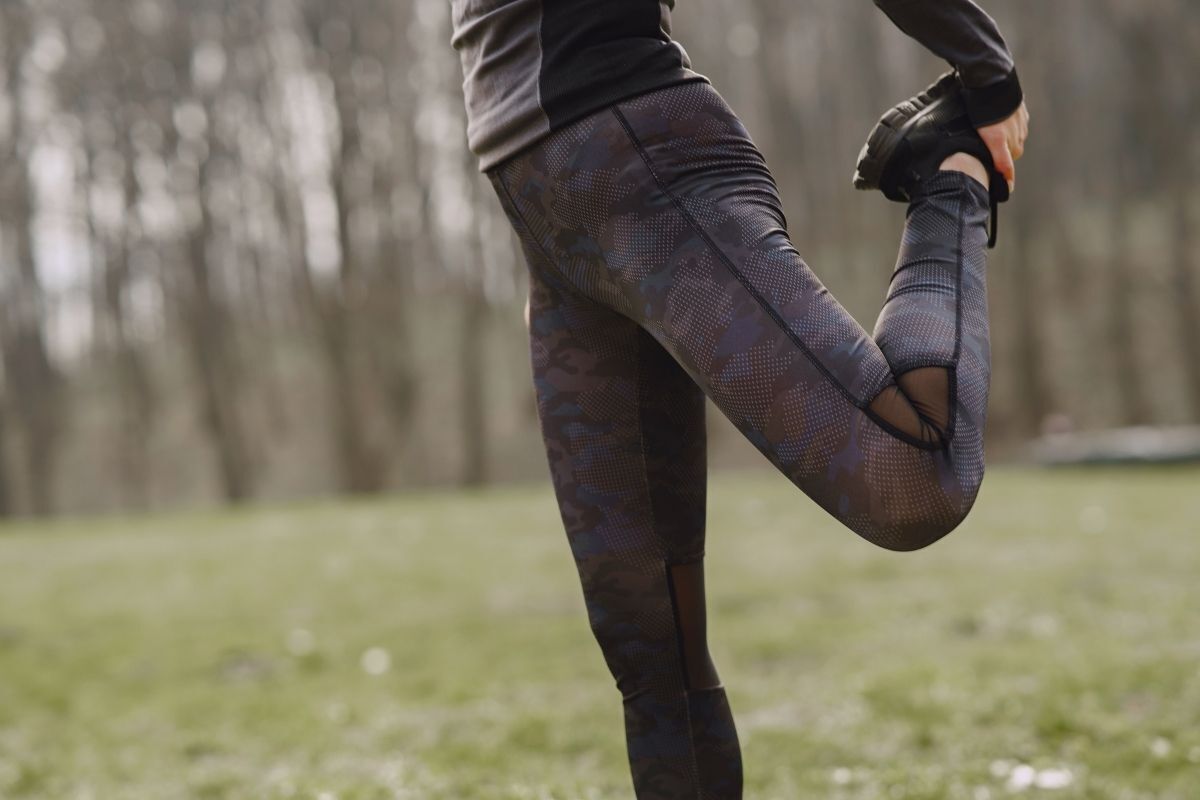
Stretches can be used in a variety of situations, not just before and after physical activity. Throughout the day, during work breaks and before bed, stretching allows muscles to recover and relax. Read on to learn some simple stretches for the whole body!
Cervical spine
Many people suffer from cervical spine pain, mainly due to poor posture. To relieve this pain, stretch your neck forward, backward and sideways. Start by making "no" movements, then "yes" movements, and then rotate your neck completely to both sides.
After that, bend your neck towards one shoulder, without lifting it. Bend towards the other side and calmly return to the starting position.
Shoulders
The shoulders accumulate the stresses of everyday life. It is not uncommon to feel heavy in the shoulders after a stressful day. This pain can even radiate to the spine and neck.
To prevent and relieve this pain, rotate your shoulders back and forth. Another stretch is to cross one arm in front of your body and hold it with the opposite hand for a few seconds.
Lumbar region
To relax the lower back and improve pain, stand with your legs slightly apart, about shoulder-width apart. Do a light squat and position your body forward, touching the floor with the palms of your hands. If necessary, bend your knees a little more.
Stay with your hands on the floor for at least 20 seconds, always observing that your shoulders are relaxed. Then, try to stand up calmly, stretching the entire spine so as to leave it extended. In this way, you will feel the tension in the lumbar spine slowly disappear until you are completely relaxed.
Cuffs
The wrists are one of the parts of the body that suffer most from repetitive strain, especially for those who work in an office or use a computer, because the act of typing all day sensitizes the joints and tendons in this region.
During the pandemic, cases of wrist pain increased even more, as many workers were relocated to the home office regime. So, to avoid these pains, it is necessary to take several breaks throughout the day.
So, stand upright to activate the blood circulation in your legs and stretch your arms forward. Rotate your fist to one side and then the other. Stretch your fists also by positioning one arm straight and the palm of your hand facing your front. With the other hand, pull the palm of your hand towards your shoulder. Perform this small pressure on both arms.
Stomach
It is common for people to sit for a long time and, generally, they are in a position that is not very favorable to the spine and stomach. Depending on the posture and eating habits, this can even trigger a case of reflux.
The stretching known as half snake is able to help in these cases. Besides releasing the stomach, it leaves your body lighter and willing to continue with your daily activities. You only need to lie down on a mattress or sofa, or on the floor, on a mat or towel.
Lie on your stomach in a comfortable place and rest the palms of your hands down, keeping your forearms parallel with your body, like a straight line. Now, lift your chest up until you can bring your shoulders to a height above your elbows.
Keep your hips and belly button on the floor and place your chin tucked into your chest. Hold this position for 30 seconds, and you will feel a relief of tension in your stomach, feeling lighter and ready to continue with your routine.
Lower part
Lumbar is one of the most affected regions of the spine of the human body. Mainly because we maintain an incorrect posture and remain seated for a long time, there is a lot of discomfort and tension in this region.
To relieve tension in your lower back, you can perform a very simple stretch known as a hug. To perform it, you will need to lie on your back on the floor and bring your knees up to your chest. This way, you will be able to hug your shins or the back of your thighs.
Remain in this position for at least 30 seconds. Remember to keep your back, shoulder and head resting on the floor during this practice.
Chest
Stretching the pectoral region will allow you to relieve tension in your shoulder and neck, as well as allow your chest to expand in order to ensure better breathing when doing your activities. You will then feel more comfortable and your body will be more relaxed.
To do it, you need to stand upright and bring your hands together behind your back, thus, pressing your shoulder blades. Seek a comfortable height for your arms, so that you feel your chest and shoulders extend, avoiding possible injuries.
Thigh
Because we spend a lot of time in a fixed position, the front of the thighs need some attention so that your muscle does not atrophy. Therefore, before any practice of physical activity or to relieve the tensions of work, it is interesting to perform stretching of the quadriceps.
First, you will need to lie on your stomach, resting a forehead on your left hand and keeping your gaze fixed on the floor. Next, place your right heel towards your glutes and hold your foot with the corresponding hand. Now, just push your hips on the floor, always keeping your knee straight.
Perform a minimum of 30 seconds for each leg. You will feel an immediate relief in your thigh and will be ready to perform your physical activities.
Calf
The calf is known as the heart of the leg. This is due to its tremendous importance in maintaining blood circulation, preventing blood from pooling in the lower limbs. Stretching the hamstrings will help preserve this function, as well as warming up this muscle for your sports practice.
So, to perform this stretch, you'll need an elastic band. Then, lie down on the floor and bend your knees, keeping your back, shoulder and head resting on the surface. Next, lift your right leg and hook the band around your foot. Now, just pull it towards your body. Repeat this process with the other leg.
What is the best time to do the stretching?
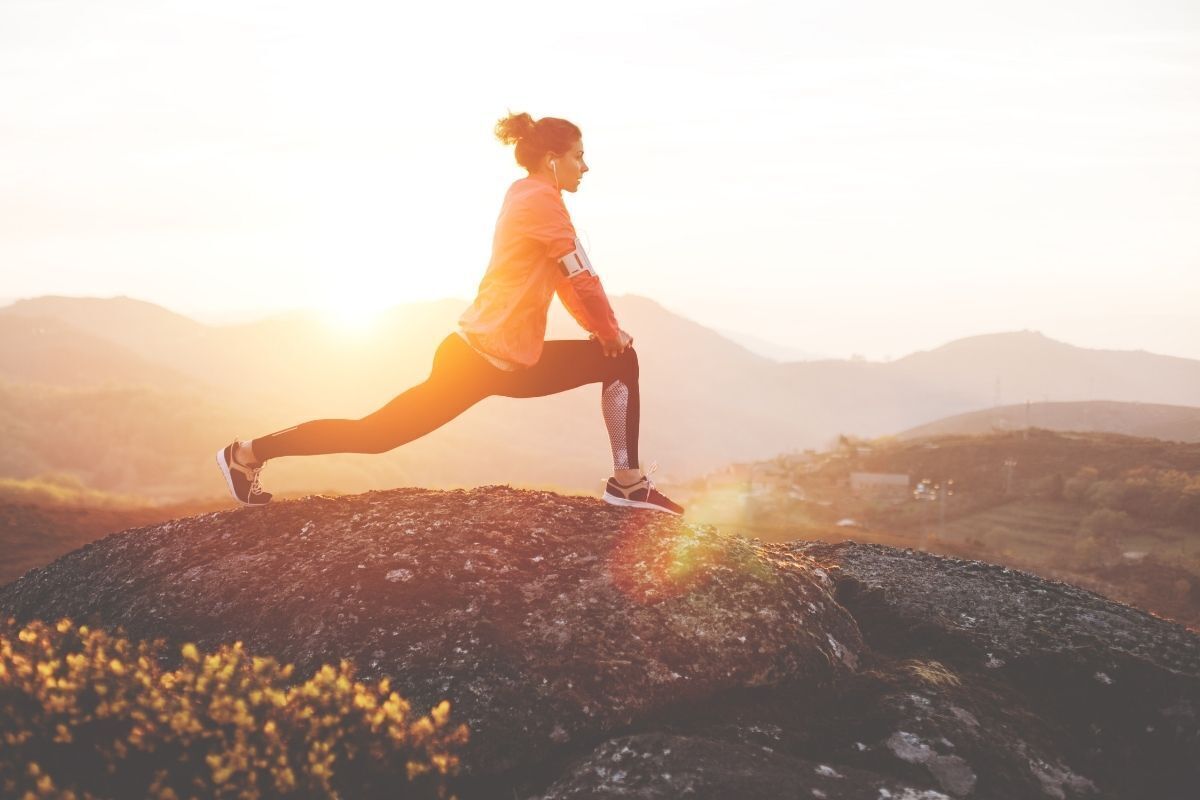
The best time to do a stretch will depend on your training goals and the type of stretch itself. This is because there are exercises that can be impaired by muscle relaxation, such as impact exercises, which require a high degree of joint stability.
In this sense, it is interesting to seek professional help, since a physical educator will be able to help you with the exercises and will also help you prevent injuries.
In general, one of the best times to perform stretching, for example, is before bedtime. Perform the passive movements lightly and quietly. If the movements are done regularly, you will feel your body relax and will be preparing to have a better quality sleep.
Therefore, stretching is a practice recommended to everyone, even if you don't have a direct relationship with any physical activity. Its exercises will help in the release of the joints, besides ensuring a better flexibility of the body. These benefits are considered ideal, especially for sedentary people.

